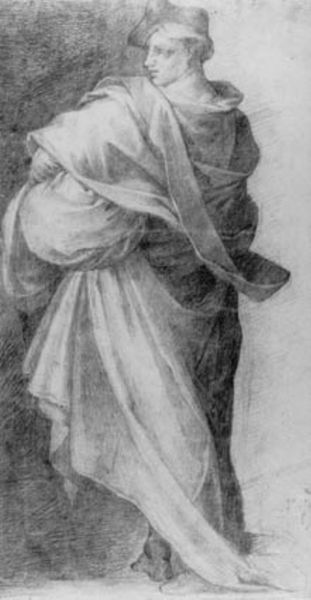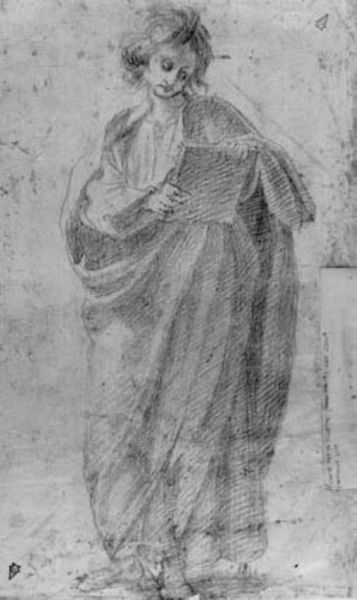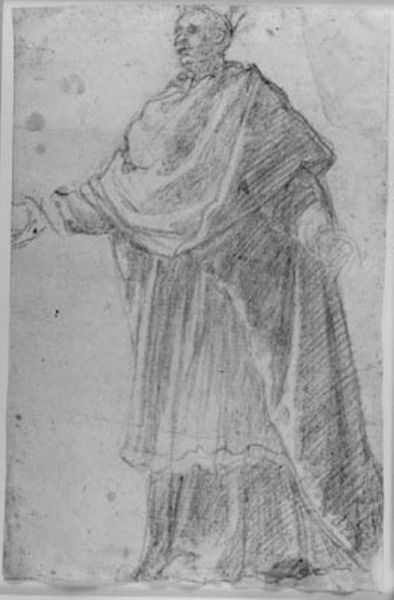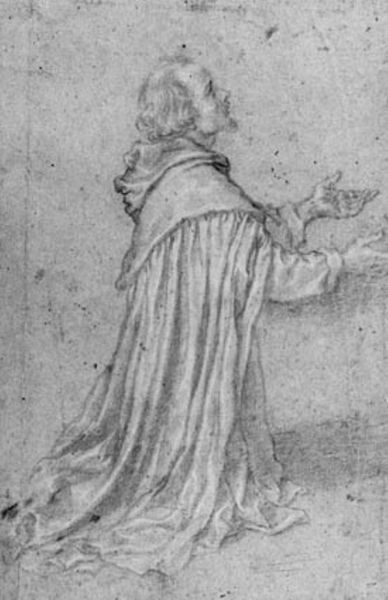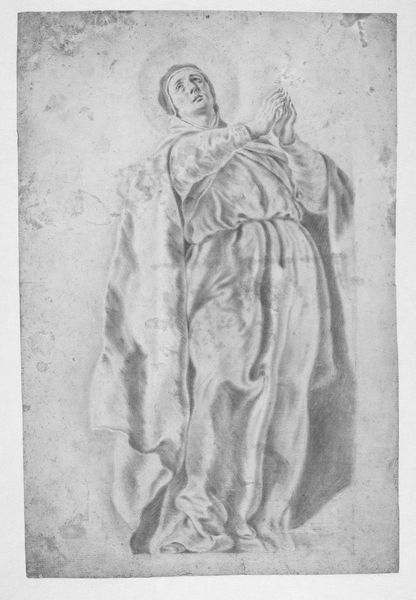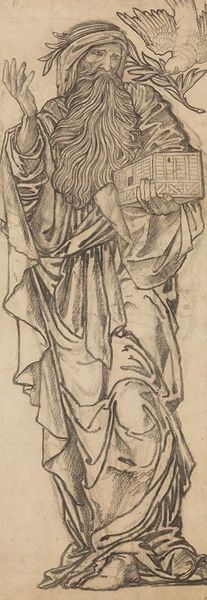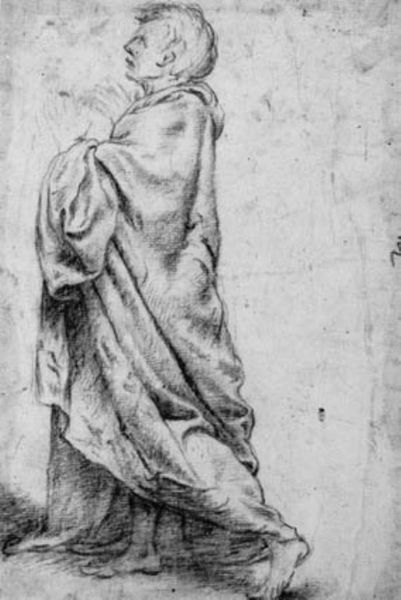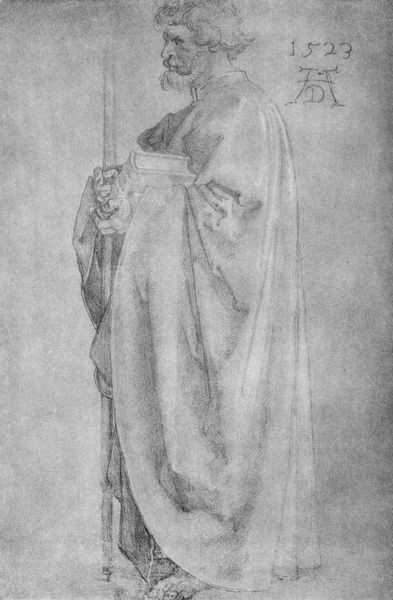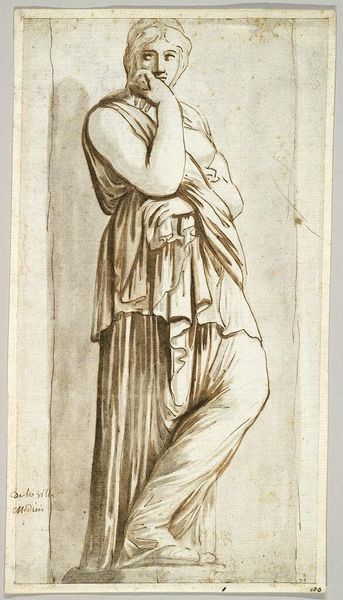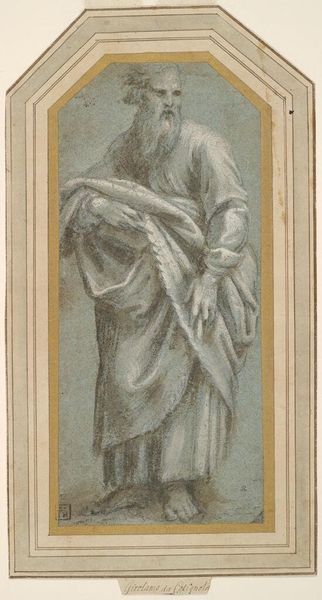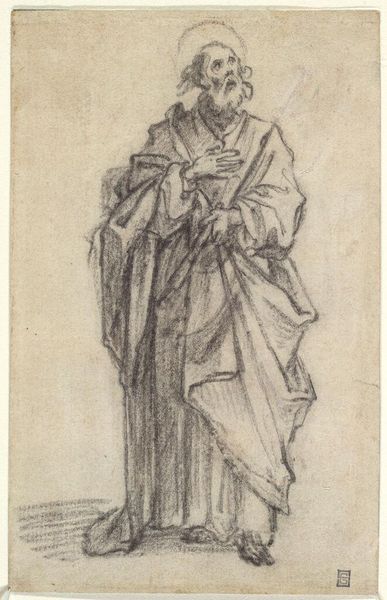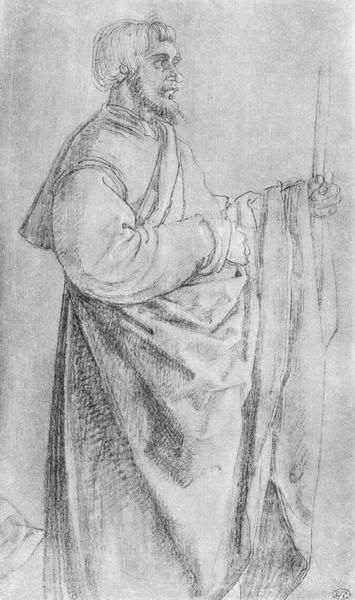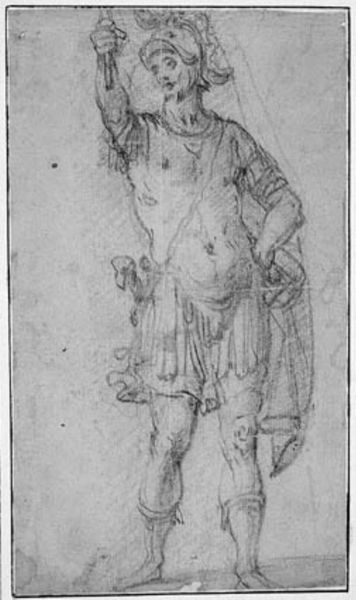
drawing, charcoal
#
portrait
#
drawing
#
charcoal drawing
#
figuration
#
11_renaissance
#
charcoal
#
academic-art
#
charcoal
Dimensions: 332 mm (height) x 226 mm (width) (bladmaal)
Curator: Let’s have a closer look at this intriguing drawing titled “Standing young man with a cloak.” Although the artist is anonymous, its creation has been estimated sometime between 1578 and 1650. It's currently held in the collection of the SMK, Statens Museum for Kunst. Editor: My first impression is the emphasis on drapery. The cloak seems to possess as much presence as the figure itself, dominating the composition. It’s fascinating how charcoal brings such depth to what appears to be simple cloth. Curator: Absolutely. And it’s charcoal – that immediately sparks questions about artistic workshops of the period. Was this piece preparatory? Charcoal lends itself to quick sketching, for studies intended for transfer to paintings or prints. The type of paper would tell us more, as its sourcing and manufacture would be significant in understanding its origin. Editor: Thinking about it as a study brings into focus the socio-economic structures influencing the production of art. Was this made for a commission, as a kind of proof of ability for presentation to the commissioner or their peer artists? The cloak itself might have signified something of the model’s profession, which is an element of social context that the garment communicates about an historical individual. Curator: Possibly, yes. It could equally have been simply to capture a specific pose, allowing later decisions on garments. But note the use of charcoal and smudging. This makes for a quicker study than precise contouring with pen and ink. It brings us back to artistic materials available, the training provided to artisans, and the evolving relationship between preparatory sketch and final artwork. It also implies a more open working relationship than many patrons may have initially supposed, between commissioner, model, workshop assistants and artist. Editor: Thinking about public reception of imagery: cloak is obviously concealing a whole lot about that individual, his gender, his physical strength and other distinguishing attributes. To display someone enrobed says a lot about historical expectations about the nature of public display, when perhaps what really mattered were social status and position rather than physical prowess or individual personality. The historical institutional framework had strict definitions about class and gender expectations about what kind of attributes made up an authoritative or successful citizen. Curator: Fascinating to consider these power dynamics visualized within the limitations of the medium. I find my perspective shifted by thinking about the actual, physical making. Editor: And considering those restrictions makes me reassess how institutional power influenced who was chosen to represent an era. The weight of imagery should never be ignored in the discussion about socio-political representation.
Comments
No comments
Be the first to comment and join the conversation on the ultimate creative platform.
